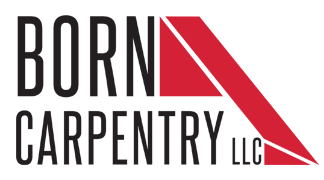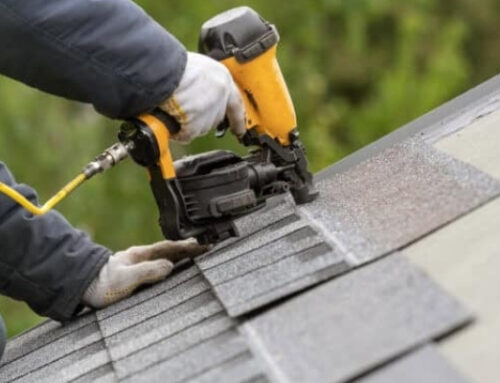Your commercial roof is a crucial component of your business’s infrastructure, protecting your property, assets, and employees from the elements. However, like any structure, commercial roofs deteriorate over time and require maintenance or replacement to ensure continued functionality and safety. In this guide, we’ll explore the telltale signs that indicate it’s time to replace your commercial roof. From visible damage to structural issues and age-related wear, knowing when to invest in a new roof can save you time, money, and headaches in the long run. Join us as we navigate the key indicators that signal the need for commercial roof replacement, empowering business owners to make informed decisions about their roofing investments.
1. Visible Signs of Damage:
- Leaks: Persistent water stains or damp spots on ceilings and walls indicate roof leaks, which can lead to water damage, mold growth, and structural issues if left unaddressed.
- Cracks and Tears: Visible cracks, tears, or punctures in the roofing material compromise its integrity and waterproofing capabilities, allowing water infiltration and potential structural damage.
- Blistering and Bubbling: Blisters or bubbles on the roof surface indicate trapped moisture beneath the roofing membrane, which can lead to premature deterioration and failure of the roofing system.
2. Structural Issues:
- Sagging or Bowing: A visibly sagging or bowing roof deck indicates structural instability, which may result from water damage, inadequate support, or aging of the building’s framework.
- Rot and Decay: Rotting or decaying roof decking, rafters, or trusses compromise the structural integrity of the roof and pose safety hazards, requiring immediate attention and possible replacement.
- Weak or Soft Spots: Soft or spongy areas on the roof surface suggest underlying water damage or rot, indicating the need for thorough inspection and remediation to prevent further deterioration.
3. Age-Related Wear and Tear:
- Excessive Age: Commercial roofs have a limited lifespan, typically ranging from 15 to 30 years depending on the material and environmental factors. As roofs approach or exceed their expected lifespan, they become more susceptible to leaks, damage, and failure.
- Worn-Out Materials: Visible signs of wear such as curling, cracking, or missing shingles, tiles, or membrane layers indicate the deterioration of roofing materials due to age, weathering, and exposure to UV radiation.
- Decreased Performance: Aging roofs may experience diminished performance in terms of waterproofing, insulation, and energy efficiency, resulting in higher utility costs and reduced occupant comfort.
4. Frequent Repairs:
- Persistent Issues: If your commercial roof requires frequent repairs for leaks, damage, or other issues, it may be more cost-effective in the long run to invest in a full roof replacement rather than ongoing patchwork solutions.
- Increasing Costs: The cumulative costs of multiple repairs over time can exceed the expense of a new roof installation, especially if the repairs become more frequent or extensive.
- Disruption to Business: Frequent roof repairs disrupt business operations, inconvenience occupants, and may compromise the safety and productivity of employees and customers.
5. Energy Inefficiency:
- Rising Energy Bills: Poor insulation, air leaks, and thermal bridging in an aging or deteriorating roof contribute to increased heating and cooling costs as HVAC systems work harder to maintain indoor comfort.
- Inconsistent Temperatures: Uneven heating or cooling within the building, drafty areas, or hot spots indicate inadequate insulation or air sealing in the roof assembly, necessitating upgrades or replacement to improve energy efficiency.
- Heat Absorption: Dark-colored or worn roofing materials absorb more heat from the sun, leading to higher indoor temperatures and greater demand for air conditioning, particularly in warm climates or during summer months.
6. Water Ponding or Standing Water:
- Pooling Water: Prolonged water ponding or standing water on the roof surface due to inadequate drainage, sagging areas, or blocked gutters can accelerate roof deterioration, promote algae growth, and increase the risk of leaks and structural damage.
- Membrane Damage: Standing water can degrade roofing membranes, promote membrane separation or blistering, and compromise the integrity of seams and flashing details, leading to water infiltration and moisture-related issues.
- Weight Load: Excessive water accumulation adds unnecessary weight to the roof structure, increasing the risk of structural overload, roof collapse, or damage to interior finishes and furnishings.
7. Mold and Mildew Growth:
- Visible Mold: The presence of mold or mildew on interior surfaces, such as ceilings, walls, or insulation, indicates moisture infiltration from a compromised roof system, posing health risks to occupants and necessitating immediate remediation.
- Musty Odors: Persistent musty or damp odors inside the building suggest hidden moisture issues within the roof assembly, such as leaks, trapped condensation, or inadequate ventilation, which can lead to mold growth and indoor air quality problems.
- Health Concerns: Mold spores released into the indoor air can exacerbate respiratory conditions, allergies, and other health issues, particularly for sensitive individuals, highlighting the importance of addressing underlying roof leaks and moisture problems.
8. Safety Concerns:
- Structural Instability: A compromised or deteriorating roof poses safety hazards to building occupants, workers, and visitors, increasing the risk of roof collapses, falls, or injuries if not promptly addressed.
- Electrical Hazards: Water infiltration into the building through a damaged roof can lead to electrical hazards, such as short circuits, electrical fires, or shock hazards from exposed wiring or electrical fixtures.
- Slip and Fall Risks: Accumulated water, ice, or debris on the roof surface creates slippery conditions for maintenance personnel or contractors performing roof inspections, repairs, or maintenance tasks, requiring caution and proper safety protocols.
9. Building Code Compliance:
- Outdated Standards: Aging or deteriorating roofs may no longer meet current building code requirements for structural integrity, fire resistance, wind uplift, or energy efficiency, necessitating upgrades or replacement to ensure compliance with local regulations and standards.
- Safety Inspections: Regular safety inspections and code compliance assessments by qualified roofing professionals help identify deficiencies and ensure that commercial roofs adhere to current building codes and industry standards.
- Liability Risks: Non-compliance with building codes and safety regulations exposes property owners to potential liability risks in the event of accidents, injuries, property damage, or code enforcement penalties, underscoring the importance of maintaining code-compliant roofing systems.
10. Long-Term Cost Savings:
- Total Cost of Ownership: While the upfront cost of roof replacement may seem significant, it offers long-term cost savings compared to ongoing repairs, maintenance, and energy expenses associated with an aging or deteriorating roof.
- ROI Calculation: Consider the return on investment (ROI) of a new roof in terms of reduced maintenance costs, improved energy efficiency, increased property value, and extended service life, which can outweigh the initial investment over time.
- Financial Planning: Budgeting for roof replacement allows for strategic financial planning and allocation of resources to avoid unexpected expenses, emergency repairs, or business disruptions due to roof failures or leaks.
By recognizing these signs and indicators, business owners and property managers can proactively address roofing issues and make informed decisions about the timing and necessity of commercial roof replacement. Stay tuned for the next installment, where we’ll delve into each point in more detail to help you assess the condition of your commercial roof and determine the most appropriate course of action.
In conclusion, recognizing the signs that indicate it’s time to replace your commercial roof is essential for maintaining the safety, integrity, and functionality of your property. From visible damage and structural issues to age-related wear and energy inefficiency, these indicators serve as valuable warnings that should prompt proactive action to address roofing problems before they escalate.
By prioritizing safety, compliance with building codes, and long-term cost savings, business owners and property managers can make informed decisions about investing in a new roof. While the upfront cost of roof replacement may seem daunting, it offers numerous benefits, including improved aesthetics, enhanced protection against the elements, and reduced maintenance and energy expenses over time.
Ultimately, proactive roof replacement ensures the longevity and reliability of your commercial property, safeguarding your investment and providing peace of mind for years to come. Stay vigilant, address roofing issues promptly, and consult with qualified roofing professionals to determine the best course of action for your commercial roof replacement needs.






